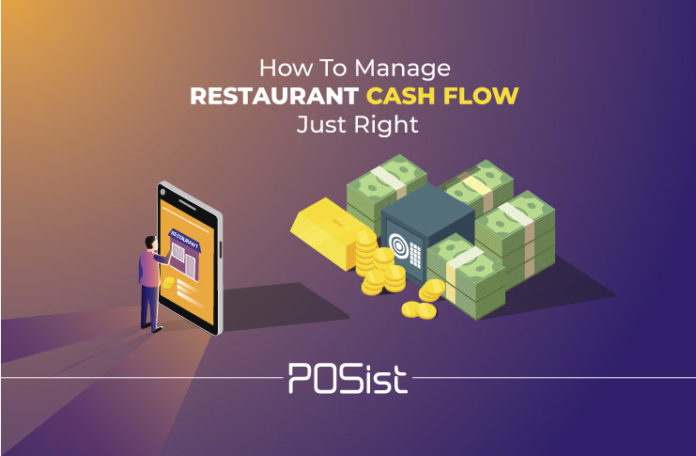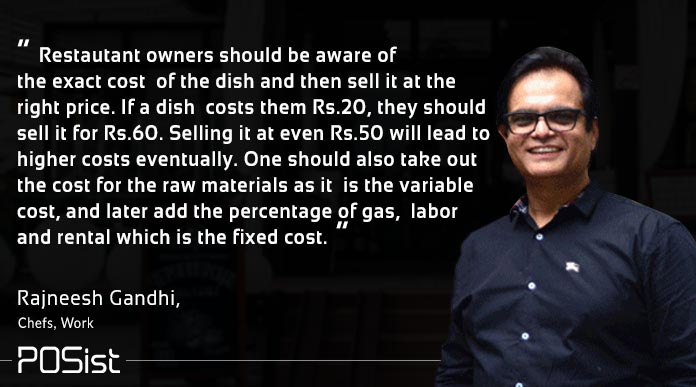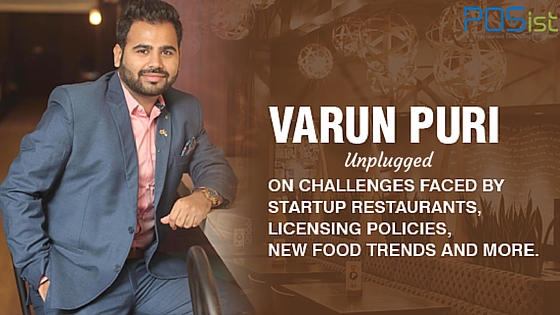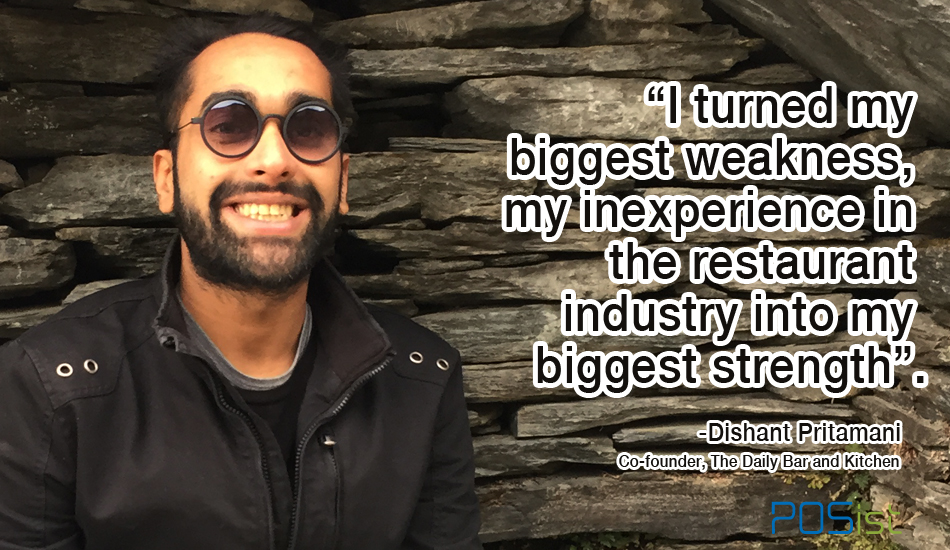Managing your restaurant finances is one of the basic and extremely important prerequisites that will keep your restaurant off the bay from any financial mishappenings. How to manage restaurant expenses? Is a question that troubles every restauranteur. Keeping a count of your restaurant cash flow at each accounting period is crucial for letting the business stay afloat and running it seamlessly. Standing capital is essential for any restaurant especially to; pay bills, buy equipment, pay the staff, buy the raw materials and handle all the other costs necessary to keep the tables filled with customers.
In this article, we will talk about restaurant cash flow management and how to calculate it the right way.
How to Calculate Your Restaurant Cash Flow
Calculating your restaurant cash flow is rather simple. Generally, your total cash flow for a period equals your cash inflows minus your cash outflows, in simple words total cash proceeds minus total cash payments.
1. Cash Inflows
Cash inflows in a restaurant essentially mean the money obtained from selling assets and the amount received from financing sources. For example, the cash received from food, beverage and merchandise sales, from catering a party, from disposing of a refrigerator and from a small-business loan. You can easily calculate your total cash inflows by adding each of these items. This helps in restaurant cash flow management in an effective manner.
2. Cash Outflows
The cash outflows consist of the cash spent on the restaurant operations. This includes money used to buy assets and the amount paid to finance sources, such as dividends distributed to investors. Expenses necessary to keep your lights on and doors open can be termed to be the operating costs. Hence, operating cost includes the cost of food and beverage ingredients, wages, rent, utilities, and insurance. Add these cash disbursements together to figure your total cash outflows.
How To Deal with Restaurant Cash Flow Problems
There are definitely certain ways by which you can maintain a healthy balance between the cash inflow and cash outflow, that will help you to have a fixed standing capital that you can use in times of crisis. Some of the smart ways by which you can manage your cash flow are:
1. Decrease Your Operational Expense
Your operational cost is essentially the input cost that helps you to run your restaurant seamlessly. The top ways by which you can try and decrease your operational expenses are-
(i) Review Your Menu Items
Once you have decided on your preferred mix of dishes hit on a strong mix of dishes, one generally finds it easier to serve the same dishes. Try collecting data on your sales for the past several months or, over the past year and compare the sales for each dish. There are high chances, you will find at least one underperforming dish that can be easily scrapped.
Since the dishes are underselling, chances are your customers probably will not even notice the dish has been removed. Such an action will help you to free up some cash by removing unnecessary inventory items and replace them with something new that you want your customers to relish.
(ii) Have a Recipe Management System
Most of the restaurants incur a lot of expenses due to the generation of kitchen waste. Low knowledge of the potion control techniques, and overuse of certain ingredients not only has the potential of creating a dish that does not attract the customers but also the possibility of generating unwanted kitchen waste. This makes it imperative that you have a proper recipe management system in your restaurant. Here, the detailed recipe of each item on the menu must be mentioned, along with the ingredients and its amounts that must be used, the cooking process and the time of the dishes. This will be like a guide that your kitchen staff must diligently follow. This will both help you in maintaining consistency in your dishes and will ensure that you don’t waste the majority of your inventory items in the generation of kitchen waste.
(iii) Replace the Least Used Ingredients
While evaluating your menu, carefully review the ingredients in each dish. Are there any that are used only once or twice? If you do come across similar instances, consider replacing them with more frequently used ingredients. The underused ingredients could also be replaced with more expensive ones that are used in other dishes. This will not only cut down your operational costs but also make ordering inventory simpler and reduce the generation of kitchen waste.
With the ultimate intention of cutting down your restaurant cost, you must never opt for low-quality ingredients. While your customers might not notice you scrapping an underperforming dish, they will definitely notice the change in the quality of your dishes.
Read in detail how to reduce the overall restaurant costs that will help you reduce your operational expenses here.
2. Re-evaluate your Menu Prices
As the food prices fluctuate your profit margins could narrow, potentially in amounts so small you may not even notice. However, with the passage of time, one can notice, that the profit margin might get so marginal that it may make it difficult for you to have a proper standing capital.
Calculate the Cost you Incur Behind Each Dish
Knowing how much you invest in preparing a dish is essentially important since you must price your menu items higher than your input cost. This will help you to garner a marginal profit and not run into a loss. You just need to follow 5 simple steps to calculate your food cost, and they are:
- Make a list of all ingredients used in the recipe and state what the weight and measurement of each ingredient used.
- You need to look for the total price of each item, not taking into consideration about the prices of the exact amount of the ingredients that goes into the dish.
- Divide the weight/ measurement of each ingredient used in the recipe by the weight of the unit it is sold in and multiply it by the price of the unit as a whole. This will determine the cost of each ingredient used in a particular dish.
- Once you have the individual amount of each ingredient that goes into making a dish, you can easily add all these amounts. This step will help you determine the cost of the entire recipe.
- Divide the cost of the entire recipe by the number of portions that it serves. This will determine the cost of each serving.
Moderation is the trick to evaluating and adjusting your menu. Instead of going about and changing your entire menu, choose one or two items to change every quarter.
Adjust the prices for your most popular items first. Because these dishes are so frequently ordered, even the small profits garnered from these dishes will pile up and will help you to make a substantial amount of profit and maintain your restaurant cash flow.
3. Have a Cash Flow Forecast Sheet
Planning in advance and forecasting your restaurant cash flow is extremely necessary in the volatile domain of restaurant industry. A comprehensive planning will help you to prioritize your goals, accordingly weigh and evaluate your needs, and fix a budget for the same well in advance. Maintain your weekly and monthly cash flows, both in and out and based on this report you can forecast the cash inflow for the future.
Once you have set your targets on what you want to achieve, you need to find the most suitable time to go ahead with your actions. One of the easiest ways to find the most appropriate time is by evaluating the average sales season to season, in order to identify the ideal times to pay for starting the projects. One thing you must always keep in mind is to make large-scale changes before your busiest months, for example, if you are bringing in some changes in the menu, make sure you do that before your busiest months begin, to ensure that you have a trial period to keep a check if that changes you brought forth are performing as expected.
Planning in advance will help you to keep that end goal in mind when considering other purchases, managing your budget, and making pricing decisions. Once you have your budget in hand, you can plan on your other purchases accordingly. This way, you’ll be able to make adjustments to your restaurant cash flow as needed throughout the year.
Regardless of what purchases you’ll be making and when, be sure to always keep a cushion of money ready in case of emergencies. After all, in this business, you never know what fires you’ll have to put out next!


















